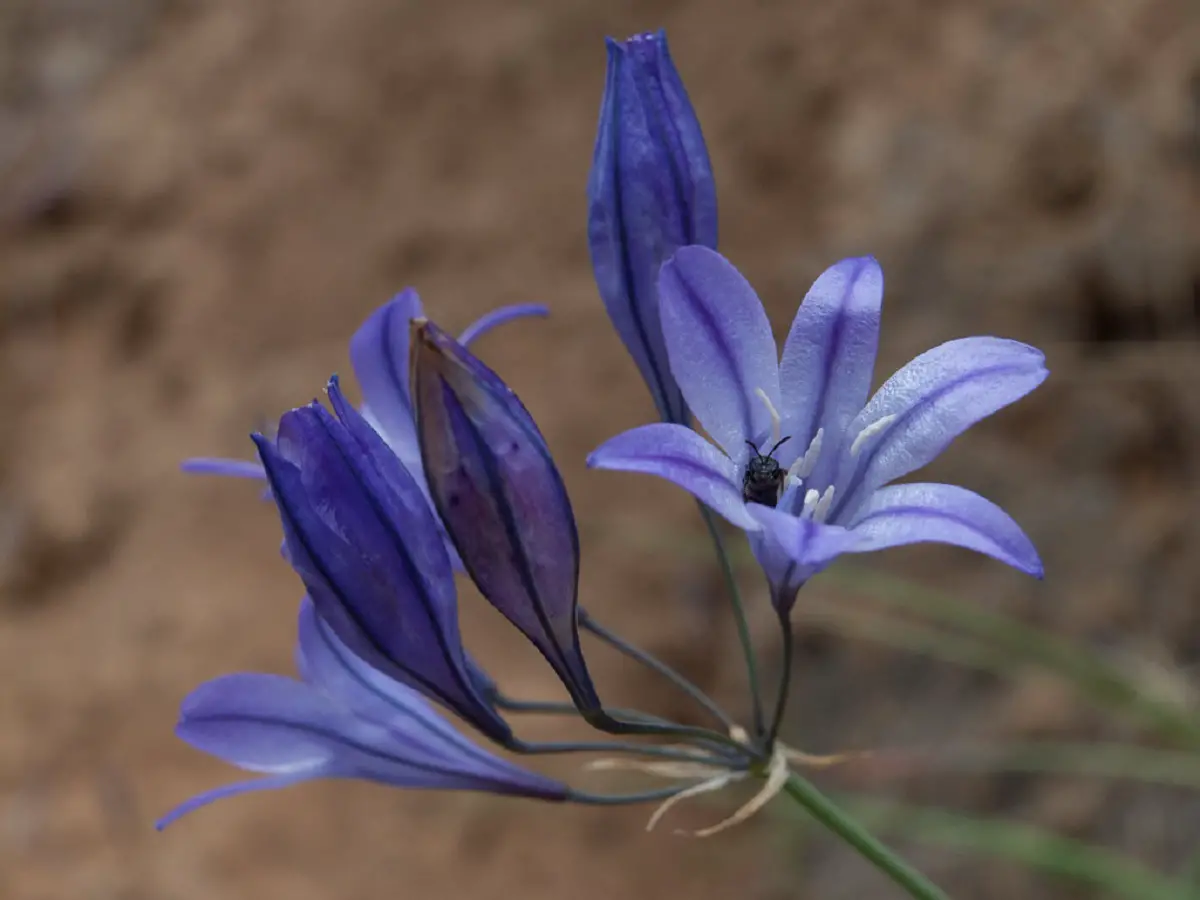
Triteleia are a genus of about 15 species of perennials with loose umbels of star-shaped flowers, all native to the western United States. The color of the flowers ranges from deep blue to pale purple blue and almost white. Easy to growr, undemanding, beautiful and adaptable, this plant is a decorative plant in home, country or urban gardens.
The name of the genus comes from the Greek trias which means three in reference to the arrangement of the parts of the flower. also called Brodiaea, pretty face, three-petal lily or wild hyacinth. They are grown for their showy funnel-shaped flowers that bloom in umbel-shaped inflorescences atop leafless stems in spring or early summer.
Features
Each flower consists of three petals, three tepals, six stamens, and a three-lobed stigma on a single three-chambered ovary.. Plant grows from bulbsor corms that only last a year, but are replaced each year by new corms that develop from fall to late spring. Plants come to rest in summer after flowering.
They reach up to 40-50 cm.Planting Triteleia among earlier flowering plants adds a splash of color around the foliage that should remain in the landscape until it turns yellow. Flowers last two to three weeks if Triteleia are properly planted and cared for. The flower grows on stems that emerge from grass-like clumps. These stems have 20 to 25 small flowers in a 15 cm umbel, which makes them look delicate and attractive when grown in the garden.
Care

Triteleia care includes watering the corms until the roots grow. Once established, Triteleia can tolerate drought. Water when the top of the soil feels dry to the touch. These plants will need protection against frost, since they are not resistant, so it is recommended to protect them with anti-frost fabric. When planting the Triteleia, make sure the corms are firm.
Plant in front of the iris corms, so blooms can downplay the foliage once the iris bloom has finished. Learning how to grow a triteleia is rewarding when the flowers bloom and adorn the garden with powerful, joyful color.
How to grow Triteleia
If planted in a group, they offer a show of colors in early summer, as they first emerge as fleshy, grass-like plants, but are soon followed by lean stems supporting clusters of blue-violet flowers (they also come in white) that are eye-catching and truly spectacular. The fruits with the seeds are also dried adding a longer interest.
This particular cultivar is called ‘Rudy’, with a cool blue infused with white. It grows happily emerging from ornamental grasses and popping up as a planned surprise. They are lovely, very easy to grow and you have to use them more often. So make sure to water regularly if the dry season starts before it blooms.. After flowering it goes to rest and tolerates drought. The bulbs can divide at any time during the dormant period.
The soil may need to be “fixed” with compost or gravel to improve its drainage before planting. Plant the bulbs about 8-12 cm deep, with the tips up and the roots at the bottom. Water well after planting.
Preparation
- Select a location with adequate drainage. The bulb can deteriorate if the soil does not drain properly.
- Before planting, add 15 inches of organic matter to the top 15 to 20 inches of soil, such as compost, mulch, or aged manure.
- Once the organic matter has been applied, remove any weeds that are still growing in the planting area. As the plant grows, keep the space free of weeds.
- Drill a hole 10 to 15 inches deep. Place the bulb in the bottom of the hole, tip up and base down. The soil should cover the bulb. The bulbs should be at least 10 centimeters apart.
- Keep the soil moist but not soggy by watering the bulb. Watering the bulb once a week should be sufficient, although the amount will need to be adjusted based on rainfall and whether it is in full sun or partial shade. When the top of the soil appears to be dry, water.
Where to plant the Triteleia

Triteleia are best planted in well-drained gravel or sand soil with an acidic, alkaline, or neutral PH balance. It is best to place them in an area that receives full sun. Triteleia are well suited to flower beds and borders of home, informal, urban, patio or Mediterranean gardens.
